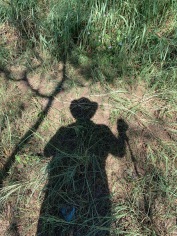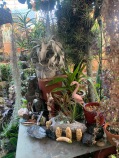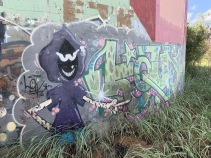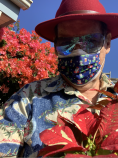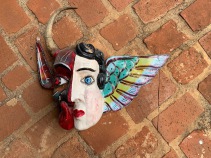My 'Trauma' Bona Fides or
What Qualifies Me to Teach This
The most important thing I have learned about posttraumatic stress disorder (PTSD), or 'trauma,' was in a training I attended by Dr. Patricia Resick, developer of Cognitive Processing Therapy. "PTSD," she asserted, "is a failure to recover." That is to say, recovery from the event, whatever its scope or impact, is the normal path. 90% of 'victims' (I know, not supposed to use that word) return to thei pre-trauma state of happiness within a few months time, without the need of therapeutic intervention. So the question becomes, What is blocking recovery?
have not been traumatized. I don't even believe that "birth trauma" is a thing. Having suffered through horrific experience confers little advantage, and may be a hindrance, in providing assistance to those who've been in the churn.
I was a full Ortho-Bionomy instructor and a full-on orthobionomer before I got my nursing degree and license (in 1983). I was in the psychiaric arena for two years before that. It seemed my specialty chose me; a door opened, I walked through. I began to notice and take interest in PTSD.
Ortho-Bionomy, I was comining to understand, relies largely upon the built-in trama recovery mechanisms of the body for its effectiveness. Thus I was primed to follow trauma's wake.
In 1990 I accepted a position in the Psych department at Tripler Army Medical Center in Honolulu. My first posting was inpatient psychiarty. There were two inpatient wards at that time. One served primarily actice duty military and the other focused on veterans. I worked for the Army, which was responsible for prviding VA benefits.
What this meant in practice that I saw a lot of people with a PTSD diagnosis. Mostly Viet Nam vets but many other sources of trauma as well. Guided by my orthobionomy I mostly learned how to be with these people, how to be felt, by the other, as an authentic person. [In class we will talk about the narcissism of trauma.] The only treatment offered was containment and dulling medications. It was being suggested (based on some brain imaging studies) that these were 'incurables.'
Another nurse (CPT Janet Viola) and I doubted this assumption and together developed a group therapy approach. I continued to provide the trama group for the rest of my twenty years at Tripler. I moved from inpatient psychiary to an inpatient addictions treatment facility. Meanwhile the VA had established its own facility (with shared campus) and I was no longer able to see the veteran patients but wars in Afghanistan and Iraq soon provided compensation.
The Army was generous in support of training activities. Also, though no longer able to provide treatment to veterans I collaborated closely with the VA in areas of research and training. Thus I have been trained in the use off al evidence-based treatment modalities: Eye Movement Desensitivation and Reprocessing, Cogitive Processing Therapy, and Prolonged Exposure Therapy. This last I found the most effective, in part because it marries up well with my orthobionomy.
For 18 years I had the position of Consult Liason for Addiction in the Medical Center. When I accepted this task I did not realize I could not have been better positioned to learn ways to help those flailing in the wake of trauma. I estimate that at least half our customers in addiction treatment had a co-occurring traumatic stress disorder. Consumption of alcohol is the most common barrier to recovery from trauma. Drugs are the most effective and widespread means of avoidane. Avoid the memories, avoid the sadness of the loss.
One other important event happened in September of 1992. I had been teaching regularly for several years on the neighbor island of Kauai as well as regularly seeing people privately. Hurricane Iniki brought that chapter to a close but taught me a lot about trauma and how we respond. In the year or so leading up to that event I had resolved to better understand Chapman's Reflexes. I had been paying attention to all of my clients' Chapman's points. I was able to get on the first commercial flight to Kauai. I labored with then on the cleanup and on breaks saw my regular clients. The differences I found in their Chapman's points were remarkable. Trauma made the Chapman's Reflex Network make sense.
